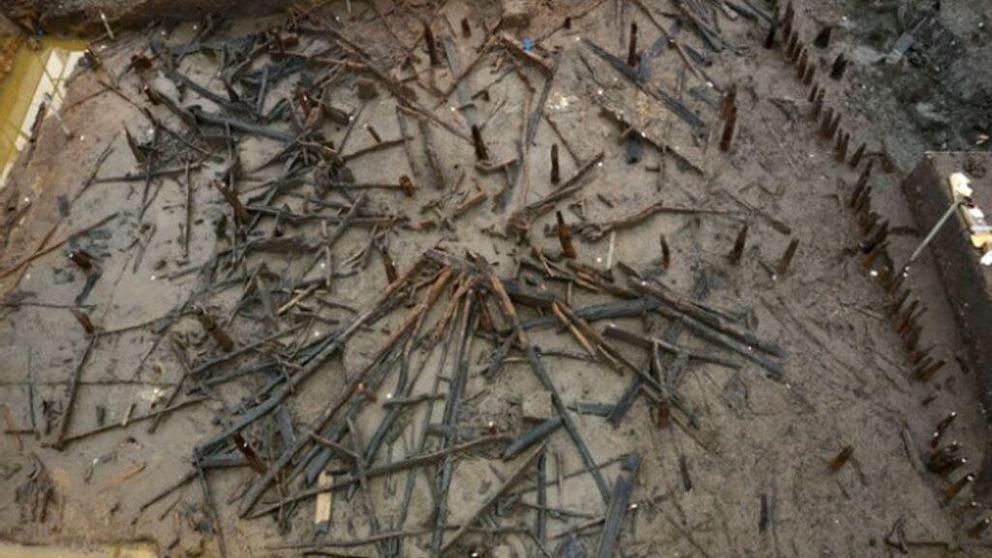The 'Pompeii' of Bronze Age houses was just uncovered in Britain
In the marshy fens of Cambridgeshire, archaeologists have uncovered what is being described as the “best-preserved Bronze Age dwellings ever found” in Britain.

The dwellings are preserved exactly as they were when they collapsed into a river.
The incredible find provides a snapshot into the everyday life of those living in the marshes around 3,000 years ago. Following a fire, the circular houses and their contents collapsed into an underlying river and became enveloped in a thick layer of silt, perfectly frozen in time.
The houses show an astonishing level of preservation. Not only have the posts that supported the floors and beams of the roof survived in situ but an array of objects from everyday life have also been spectacularly preserved.
From textiles and tools to cooking pots that still contain their last meal, the incredible conditions have led some to compare it to a Bronze Age Pompeii.
The extent of domestic objects found sandwiched between the roof and the floor when the house collapsed is unprecedented from any British site.
“It feels almost rude to be intruding,” explained Mark Knight, director of the site that is being excavated by the Cambridge Archaeological Unit, to The Guardian.
“It doesn’t feel like archaeology anymore, it feels like somebody’s house has burned down and we’re going in and picking over their goods.” These goods were not just everyday objects either, many were precious and expensive at the time.
A bronze sickle has been found, for example, as have glass beads that may once have formed a necklace.
The dwellings were originally discovered in 1999 when a series of poles were noticed sticking out of the edge of the fen. But it wasn’t until 2006 when extensive excavations revealed the true extent of what had been preserved in the waterlogged ground, that the significance of the site really became apparent.
The settlement was built on a series of poles sunk deep into the river channel over which they sat. At the time they were standing, the region would have been a watery network of rivers winding their way through the marshes before emptying out into the Northern Sea.
And yet despite residing in the marshes, it seems that the people were not living off them. The researchers were surprised to find that they were not eating fish, eels or clams, nor were they using reeds to make things with. Instead, it seems they were eating domestic animals such as pigs and sheep.
The spine of a cow was even found in one of the smaller buildings, leaving some to suggest that the meat may have been left to hang before the fire destroyed everything.
Considering the closest dry land where grazing could have occurred at the time was around half a kilometre (0.3 miles) away, this completely changes how archaeologists thought Bronze Age people utilized the landscape and resources surrounding them.
This could imply that the location of the settlement had less to do with food, and more to do with control.
During this time, the rivers would have been the main transport links, so perhaps by controlling these, the inhabitants could have gained wealth, power, and status, an idea supported by the variety of food found buried in the buildings.
